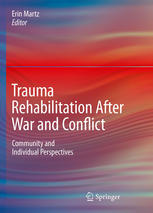

Most ebook files are in PDF format, so you can easily read them using various software such as Foxit Reader or directly on the Google Chrome browser.
Some ebook files are released by publishers in other formats such as .awz, .mobi, .epub, .fb2, etc. You may need to install specific software to read these formats on mobile/PC, such as Calibre.
Please read the tutorial at this link: https://ebookbell.com/faq
We offer FREE conversion to the popular formats you request; however, this may take some time. Therefore, right after payment, please email us, and we will try to provide the service as quickly as possible.
For some exceptional file formats or broken links (if any), please refrain from opening any disputes. Instead, email us first, and we will try to assist within a maximum of 6 hours.
EbookBell Team

4.3
78 reviews"As foreign assistance flows into post-conflict regions to rebuild economies, roads, and schools, it is important that development professionals retain a focus on the purely human element of rebuilding lives and societies. This book provides perspective on just how to begin that process so that the trauma people suffered is not passed on to future generations long after the violence has stopped." - Amy T. Wilson, Ph.D., Gallaudet University, Washington, DC
"This ground-breaking text provides the reader with an excellent and comprehensive overview of the existing field of trauma rehabilitation. It also masterfully navigates the intricate relationships among theory, research, and practice leaving the reader with immense appreciation for its subject matter." -Hanoch Livneh, Hanoch Livneh, Ph.D., LPC, CRC, Portland State University
Fear, terror, helplessness, rage: for soldier and civilian alike, the psychological costs of war are staggering. And for those traumatized by chronic armed conflict, healing, recovery, and closure can seem like impossible goals.
Demonstrating wide-ranging knowledge of the vulnerabilities and resilience of war survivors, the collaborators on TraumaRehabilitation after War and Conflict analyze successful rehabilitative processes and intervention programs in conflict-affected areas of the world. Its dual focus on individual and community healing builds on the concept of the protective "trauma membrane," a component crucial to coping and healing, to humanitarian efforts (though one which is often passed over in favor of rebuilding infrastructure), and to promoting and sustaining peace. The book’s multiple perspectives—including public health, community-based systems, and trauma-focused approaches—reflect the complex psychological, social, and emotional stresses faced by survivors, to provide authoritative information on salient topics such as:
Rehabilitation after War and Conflict lucidly sets out the terms for the next stage of humanitarian work, making it essential reading for researchers and professionals in psychology, social work, rehabilitation, counseling, and public health.